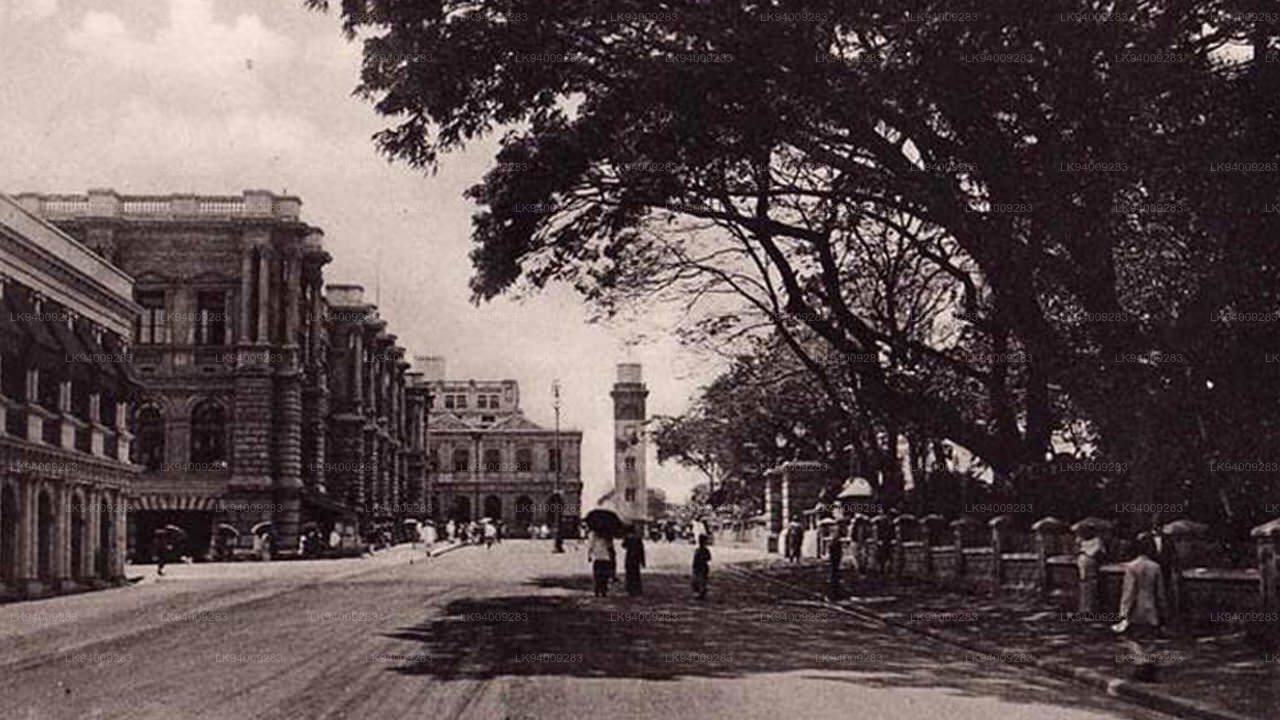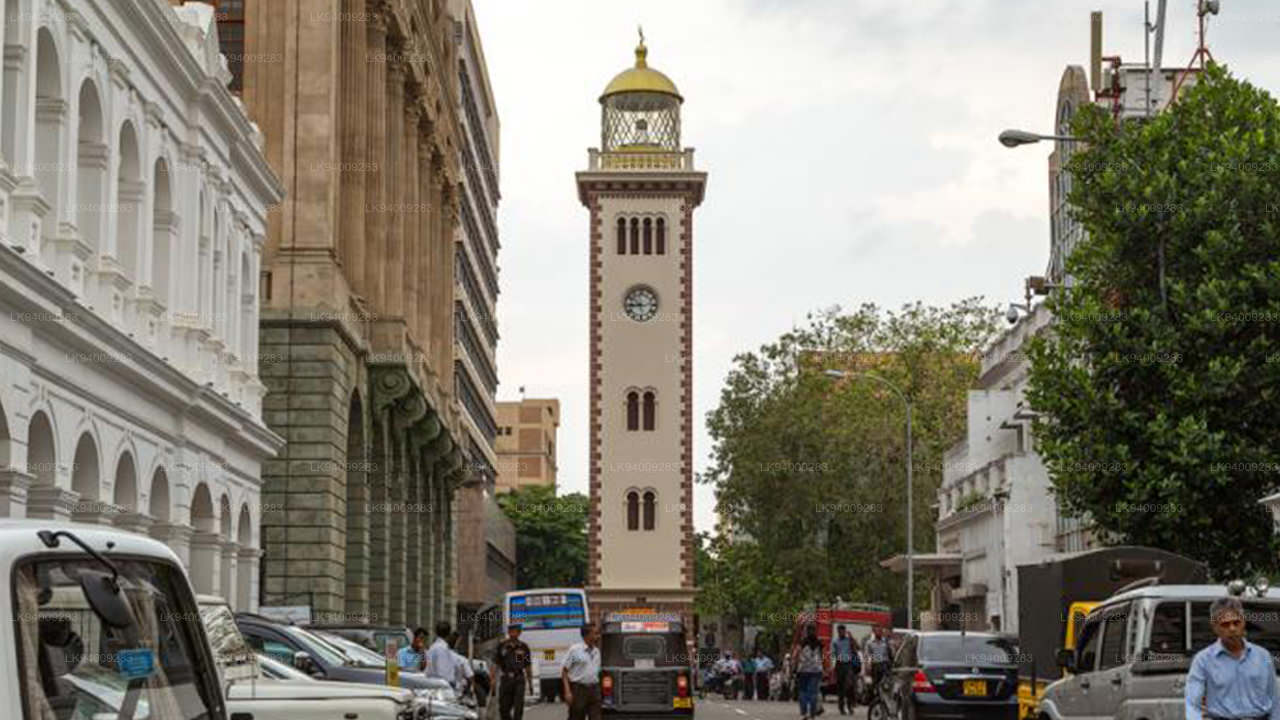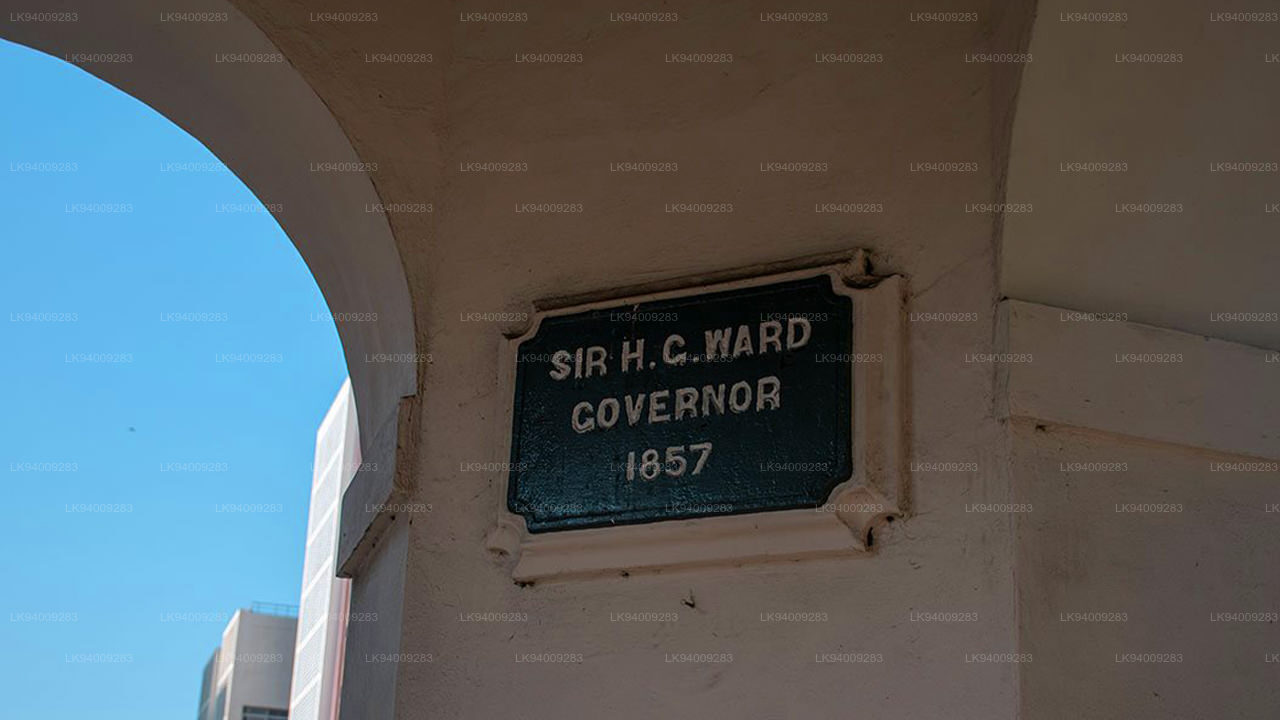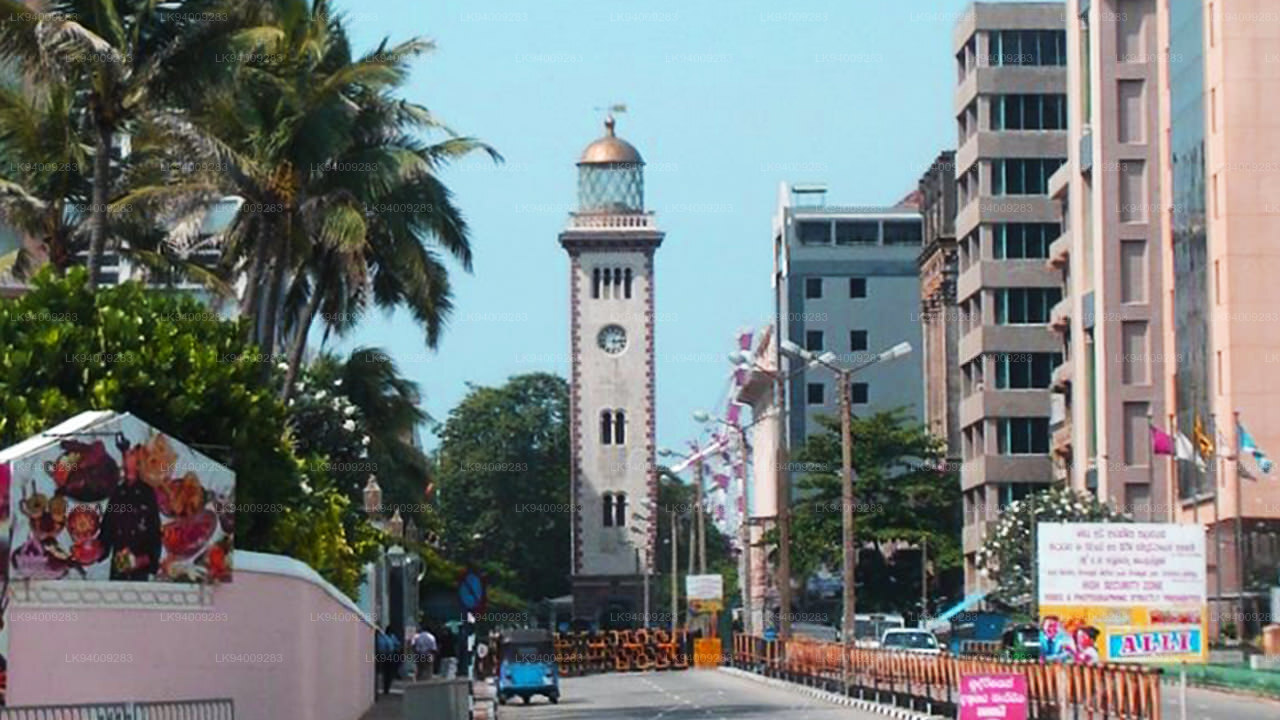
Colombo linn
Sri Lanka pealinn Colombo on dünaamiline linn, mis ühendab traditsioone ja modernsust. See uhkeldab koloniaalajastu arhitektuuri, elavate turgude ja rahulike budistlike templitega. Mitmekesise köögi, kasvava silueti ja kaunite randadega on see elav äri-, kultuuri- ja turismikeskus, pakkudes väravat Sri Lanka imede avastamiseks.
Old Colombo Lighthouse and Clock Tower
Old Colombo Lighthouse or Colombo Fort Clock Tower is a clock tower and was a lighthouse in Colombo. The lighthouse is no longer operational, but the tower remains and functions as a clock tower. It is located at the junction of Chatham Street and Janadhipathi Mawatha (formerly Queens Road) in Colombo fort.
History
The tower was constructed as a clock tower in 1856-57 and completed on the 25 February 1857. The tower was designed by Emily Elizabeth Ward, the wife of Governor Sir Henry George Ward (1797 – 1860). The construction was undertaken by the Public Works Department, under the supervision of Mr John Flemming Churchill (Director General of Public Works). The 29-metre-high (95 ft) tower was the tallest structure in Colombo at that time. The original clock was commissioned for £1,200 in 1814 by the then Governor Sir Robert Brownrigg (1759 – 1833) but was kept in a warehouse, due to economic reasons, until 1857 when it was finally installed. The lighthouse was deactivated after its light became obscured by nearby buildings and was decommissioned on 12 July 1952. The modern Galle Buck Lighthouse was erected on Marine Drive as its replacement.
Features
The original Colombo lighthouse was located on a bastion on the ocean edge of the fort, was a neo-classical structure, with a 23 m (75 ft) wooden light tower rising from a two-storey circular brick building and surrounded by an elaborate colonnade.[5] It was erected in 1829 and subsequently demolished with the removal of the fort ramparts between 1869 and 1871. The clock mechanism was constructed by the renowned English clockmakers, Dent, who were also responsible for manufacturing the clock ('Big Ben') at Westminster Palace in 1852. The clock tower was formally commissioned on 25 March 1857. The bells in the clock tower consisted of a main bell of approx. 150 kg (550 lb) and two auxiliary bells of 152 kg (335 lb).
Colombo ringkonna kohta
Colombo on Sri Lanka suurim linn ja kaubanduskeskus. See asub saare läänerannikul ja Sri Lanka pealinna Sri Jayewardenepura Kotte kõrval. Colombo on elav ja tegus linn, kus on segu moodsast elust ning koloniaalajastu hoonetest ja varemetest ning kus elab 647 100 inimest. Colombo metropolipiirkond, mis koosneb Colombo, Gampaha ja Kalutara linnaosadest, elab hinnanguliselt 5 648 000 inimest ja selle pindala on 3694,20 km². Colombo on mitmerahvuseline ja mitmekultuuriline linn. See on Sri Lanka rahvarohkeim linn, kus elab 642 163 inimest. Colombo elanikkond koosneb paljudest etnilistest rühmadest, peamiselt singalitest, mauridest ja tamilitest. Linnas elab ka väikeseid Hiina, Portugali, Hollandi, Malai ja India päritolu inimeste kogukondi, samuti arvukalt Euroopa väljarändajaid. Enamiku Sri Lanka ettevõtete peakontorid asuvad Colombos. Mõned tööstusharud hõlmavad keemia-, tekstiili-, klaasi-, tsemendi-, nahktoodete, mööbli ja ehete tootmist. Linna keskuses asub Lõuna-Aasia suuruselt teine hoone – Maailma Kaubanduskeskus.
Lääneprovintsi kohta
Lääneprovints on Sri Lanka kõige tihedamalt asustatud provints. Seal asub seadusandliku võimu pealinn Sri Jayawardenepura Kotte ning Colombo, mis on riigi haldus- ja ärikeskus. Lääneprovints jaguneb kolmeks peamiseks ringkonnaks: Colombo (642 km²), Gampaha (1386,6 km²) ja Kalutara (1606 km²). Sri Lanka majanduskeskusena on linnas esindatud kõik suuremad kohalikud ja rahvusvahelised ettevõtted, samuti kõik suuremad disainer- ja tänavakauplused, seega olge valmis nautima jaemüügiteraapiat lääneprovintsis. Kuna saarel on kõigist provintsidest suurim rahvaarv, asuvad seal peaaegu kõik saare parimad haridusasutused. Provintsi ülikoolide hulka kuuluvad Colombo Ülikool, Sri Jayewardenepura Ülikool, Kelaniya Ülikool, Sri Lanka Avatud Ülikool, Sri Lanka Budistlik ja Pali Ülikool, kindral Sir John Kotelawala Kaitseülikool ja Moratuwa Ülikool. Lääneprovintsis on riigis kõige rohkem koole, sealhulgas riiklikke, provintsi-, era- ja rahvusvahelisi koole.










































